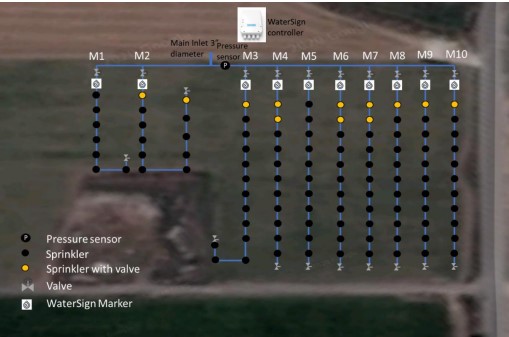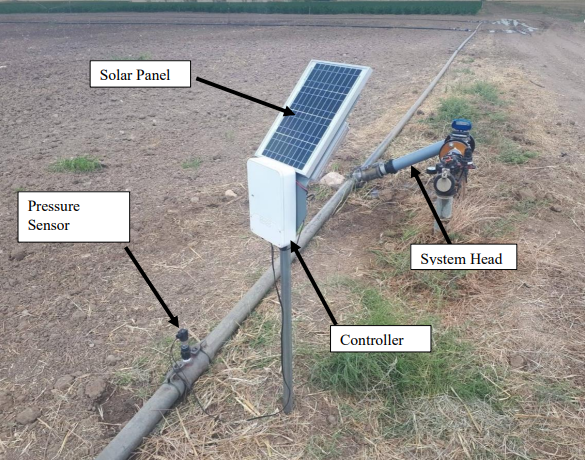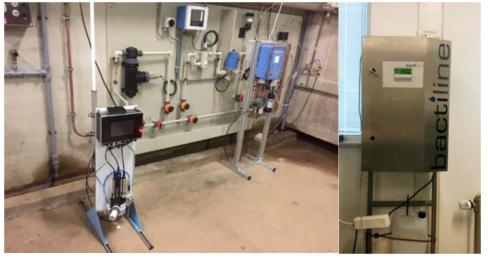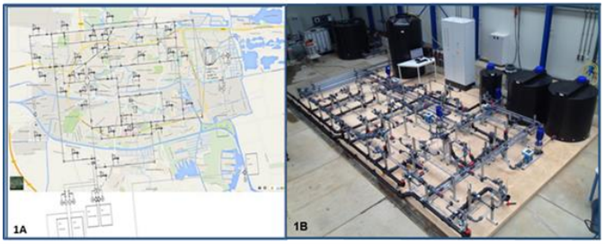Water scarcity is a concern not only due to a changing climate and a rise in demand, but also due to non-accountable losses within water distribution networks. In some parts of the EU, up to 80 % of water pumped into distribution systems is lost [Life SmartWater]. Leakages in large diameter main pipelines represent the highest share of the total water losses. However, the issue has been poorly addressed thus far, for example due to lack of access to pipelines. In addition, there is a lack of leakage control and management of water systems [1].
Water pipe networks are vulnerable to losses due to the geographically wide range of water networks, permanent material wear on the pipes, and many access points. In addition, usually there is no availability of real-time information about network conditions nor the water flow for the water network operator. The undetected pipeline damages, possible illegal withdrawal, and potential contamination in the water network can result in damage to the environment [Life SmartWater].
Active management of water distribution networks through data and optimisation is not yet common. Currently, most of the water networks are operated based on mid-term planning. Leakages are often detected very late, with a delay of weeks or months. The detection is usually done manually. Therefore, smart water management systems, which can prevent water losses, have the potential to gain major savings in cost, and protect the environment [Life SmartWater].
Leak detection systems can identify both changes in water flow and detect leakages, blockages, and water losses. The detection system can be in real time, and is able to detect illegal connections to the network. The system can spot changes in certain points and alert actions, as well as analyse water consumption patterns [Watersign] [SW4EU].
Water leaks can be detected either with water pressure meters or with water meters. These types of metering are most suitable in places where the water system has clear main water lines. In addition to meters, it is possible to use water as a marker and transmit the information. When the water is used as marker, it contains e.g. some chemically-detectable agents. However, this solution is typical of urban irrigation systems and not of potable water systems [Watersign] [SW4EU].
Detection Leakages, Water as a sensor [Watersign] [7]


Controlling leakages
Water leakages can be controlled with sensors-equipped valve actuators. Valve actuators and sensors create a smart water grid, allowing or blocking water flows. The automations closing and opening the valves are efficient and prevent water damages. The wireless technology also allows for cost-efficient solutions in renovations. These solutions are not often used underground, which water distribution networks typically are [Life SmartWater].
There are also actuators using battery-powered and wireless data communication technology, which makes it possible to control urban water systems [Life SmartWater].
Controlling leakages, sensor installation [5]

Leakage detection in water management systems
Traditionally, water control systems were designed to deliver water and did not focus much on efficiency. New water management systems are based on platforms, which combine prediction, hydraulic simulation, assessment, leakage, and optimisation. This makes detection and control of leakages easier and more reliable [SWSS].
Water management system and modelling, design and scale model [5]

MATURITY:
Most water leak detection solutions are already available on the market or very close to commercial deployment, for example:
-
Detection of leakages by using flow meter or pressure sensor were demonstrated in Watersign and in SW4EU.
-
Detection of water leakages with an airborne surveillance service for water leak detection to provide water utilities with adequate information on leaks in water infrastructure was demonstrated in operational environment in WADI.
-
Leakage detection in water management systems is available on commercial service platforms (e.g. DIANA, SWSS).
Examples of solutions in pilot phase:
-
Life SmartWater tested the large-scale application of leakage-control system based on wireless valve actuator technology combined with pressure sensor technology in industrial environment at district scale.
-
Smart metering Pre-Commercial Procurement (PCP) procedure for demand driven innovative solutions was piloted in SmartMet.
Comments ()